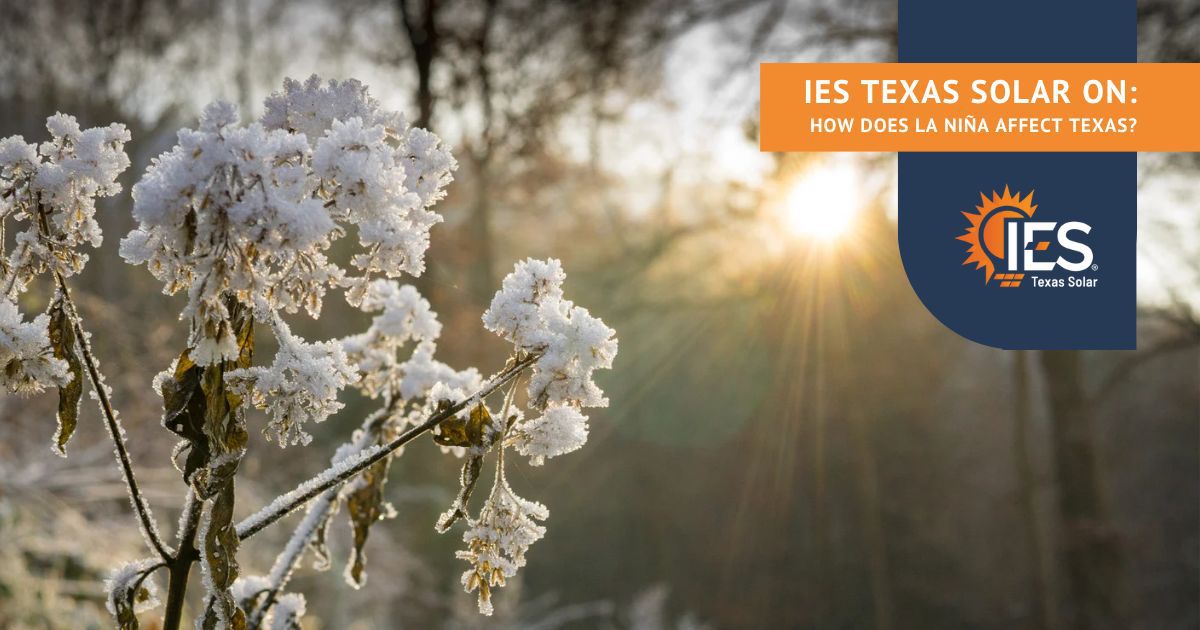
Time to read: 4 minutes
January 24, 2023
Three La Niña Winters in a Row? What Does This Mean for Texas?
The past two winters here in Texas have been La Niña winters, and the current one is no exception. Ask any Texan about the weather and they’re likely to tell you that if you don’t like it just wait five minutes. Texan humor aside, the Lone-Star state is no stranger to crazy changes in the weather. It seems like the weather patterns like La Niñ̴a and El Niño become popular topics whenever chilly weather rolls around. In this article, we’re going to briefly explore El Niño and La Niña. We will also cover what La Niña means for Texans, and what you can do to prepare.
But first things first – What exactly is La Niña?
What is La Niña?
To start things off, let’s briefly go over what La Niña and El Niño are. Both La Niña and El Niño are part of what is called the El Niño Southern Oscillation climate pattern (ENSO for short). ENSO has a few different phases, but the ones we will be discussing here are the warm phase (El Niño) and the cold phase (La Niña). These phases occur in the Pacific Ocean and are characterized by water surface temperatures and air surface pressure.
Whenever La Niña occurs, the colder than normal temperature of the seawater around South America causes the jet stream to shift. In contrast to this, El Niño occurs when the water temperature is warmer and causes jet streams to shift but causes different weather conditions in America than La Niña does.
Put simply, El Niño is when the surface temperature of the water is higher than average while La Niña is when ocean temperatures are lower. The warmer or colder ocean temperatures cause the winds to strengthen and change. But what does any of this mean for Texans?
What Does This Mean for Texans?
While La Niña is characterized by colder conditions in the Pacific Ocean, the temperatures for the American south-west are generally warmer during such a winter. It sounds like a contradiction, but the colder ocean temperatures during La Niña cause warmer winter weather for Texas. This has everything to do with the fact that the air pressure is affected by ocean temperature. Depending on how warm or cool it is, the jet streams create different weather conditions.
The things that usually accompany a La Niña winter for Texans are:
- La Niña normally makes Texan winters a bit warmer than average. Even though the water temperature in the Pacific Ocean is colder than average, the changes it causes to the jet stream result in warmer winters in Texas.
- Less precipitation. This, unfortunately, means that drought conditions will remain real for Texans and may worsen as the winter goes on.
- Less humidity. The lack of precipitation results in less moisture in the air.
It’s very important to keep in mind that, while somewhat predictable, the weather in Texas is full of surprises. The last two Texas winters took place during La Niña and brought about alarming issues caused by the weather. In 2021, Winter Storm Uri caused state-wide power outages and caused widespread ruin and destruction. In early winter of 2022, a historic blizzard hit the US and caused massive amounts of power outages. It would seem that a “once in a hundred years/once in a generation storm or cold snap” happens every year now and they’ve happened during La Niña.
While the current winter also happens during La Niña, it doesn’t mean that cold fronts and freezes won’t happen. Texas has already experienced freezing temperatures just last month that caused a call for power conservations and led to power outages for thousands of Texans. It’s still much too early to relax on being prepared for extreme cold snaps.
Remember, having a good checklist for winter power outages can save you and your family a lot of trouble! You can also install a Generac® home standby generator that can keep the power on for weeks at a time! You can also maximize your energy independence and stability by adding a solar power system with backup batteries.
IES Texas Solar Has You Covered No Matter What the Weather Brings
No matter the weather, IES Texas Solar is here to help. More Texans than ever are making the switch to a solar power system. The Lone Star State is well on its way to having reliable, renewable, and stable power for the solar community. With the coldest part of the Texas winter ahead, installing a solar powered system with battery backup and a home standby generator can keep the power on no matter how long the blackouts last. The weather may be unpredictable in Texas, but one thing is for sure – the solar community is ready for it.
If you are considering installing a backup generator or switching to solar for your home or business, reach out to us by going to our website, iestxsolar.com, or by giving us a call at (855) 447-6527.